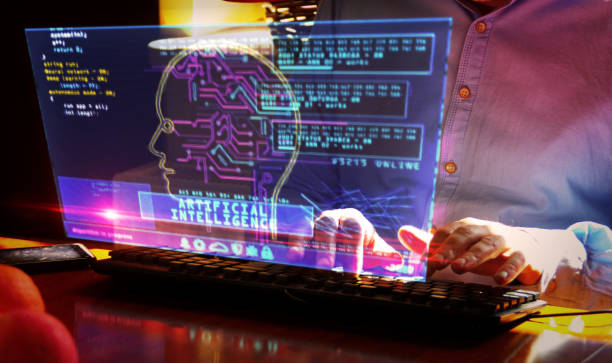An Introduction to Artificial Intelligence Robots
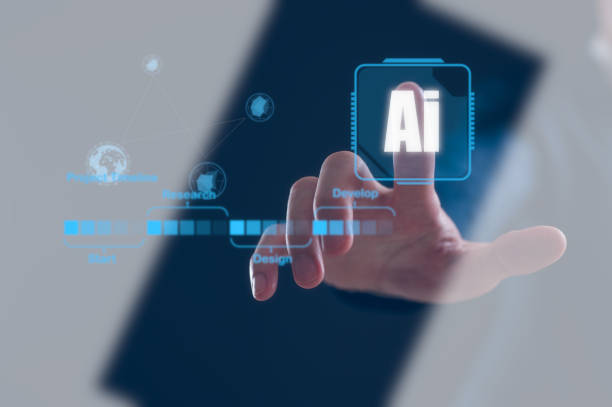
AI robots are a concept that breaks the boundaries of #technology and imagination, promising a new era of human-machine interaction.
These autonomous entities, #powered by advanced artificial intelligence algorithms, are capable of understanding their environment, processing complex information, and performing tasks with minimal human intervention.
From modern industrial factories to smart homes and advanced hospitals, the presence of intelligent robots is rapidly increasing, fundamentally changing the way we live, work, and interact with the world.
These advancements not only bring speed, accuracy, and efficiency but also provide new potentials for solving difficult problems and improving the quality of human life.
In fact, these robots are not just programmed machines; they are dynamic and intelligent systems that can learn, gain experience, evolve, and even, in some cases, make complex and independent decisions.
The emergence of #AI_robots as a dominant phenomenon reflects significant leaps in computational power and the development of deep learning algorithms that enable machines to emulate human cognitive abilities.
#AI_robot is not just a word, but a representative of the Fourth Industrial Revolution and a big step towards a future where artificial intelligence has become an inseparable part of daily life.
These systems are composed of various disciplines such as mechanics, electronics, computer science, robotics, and advanced algorithms.
Their capabilities include accurate facial recognition, fluent natural language processing, autonomous navigation in complex environments, and even limited emotional interaction.
As we progress, these intelligent autonomous machines become capable of performing tasks previously thought to be exclusive to human ability.
The primary goal of developing such robots is to increase efficiency on a large scale, reduce human errors, and perform tasks that are dangerous, repetitive, or impossible for humans.
This technology promises tremendous transformations in various industries, from manufacturing and medicine to education and customer service.
They will not only be tools for performing tasks but also partners in complex human processes, helping us discover new horizons.
In future chapters, we will delve into various aspects of this astonishing phenomenon to provide a comprehensive picture of its power and impact on modern life.
Falling behind in competition with large online stores?
Rasaweb makes your business online with professional e-commerce website design and increases your market share!
✅ Increase brand credibility and customer trust
✅ Easy shopping experience leading to more sales
⚡ For free website design consultation, act now!
History and Evolution of Intelligent Robots
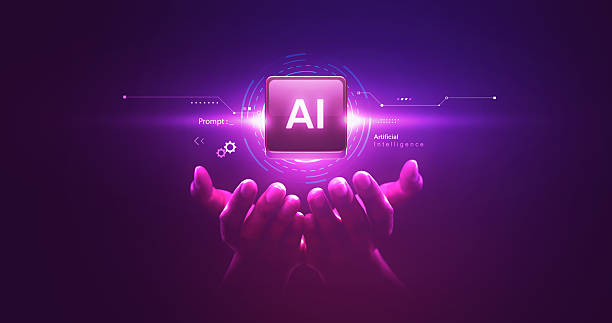
The evolution of #AI_robots is an amazing story from ancient dreams to modern realities.
Initially, the human perception of robots was limited to simple mechanical entities performing repetitive tasks; examples include ancient Greek automata or Leonardo da Vinci’s designs.
The 20th century witnessed more significant advancements; including the emergence of the first industrial robots like “Unimate” in the 1960s, which revolutionized factory production lines.
These early robots were primarily programmable and lacked any real “intelligence” for decision-making or adapting to the environment.
They simply executed pre-defined instructions, and any changes in their working environment posed a challenge, requiring precise and time-consuming reprogramming.
These limitations indicated the need for greater intelligence in the design and application of these machines.
With the advent of the 21st century and dazzling advancements in #artificial_intelligence, especially #machine_learning, #deep_learning, and #neural_networks, the concept of #AI_robot took on a new form.
It was no longer merely a “machine” but transformed into an “intelligent agent” capable of understanding, analyzing, and even predicting.
Advanced programming, powerful sensors, fast processors, and access to vast amounts of data enabled robots not only to see and hear their environment but to “understand” it and act accordingly.
From Mars exploration robots to surgical robots in operating rooms, and from delivery robots to smart voice assistants like Siri, these intelligent systems have managed to overcome previous limitations and push the boundaries of machine capability.
Robotics and artificial intelligence are now intertwined, accelerating the growth path of this technology.
A future where robots are not just our assistants, but perhaps our colleagues and even our teachers, is no longer just science fiction but an emerging reality rooted in the remarkable advancements of recent decades, promising unprecedented transformations in all aspects of human life.
The rapid evolution of these entities demonstrates their infinite potential in solving major challenges and improving the quality of life.
Types of AI Robots and Their Amazing Applications
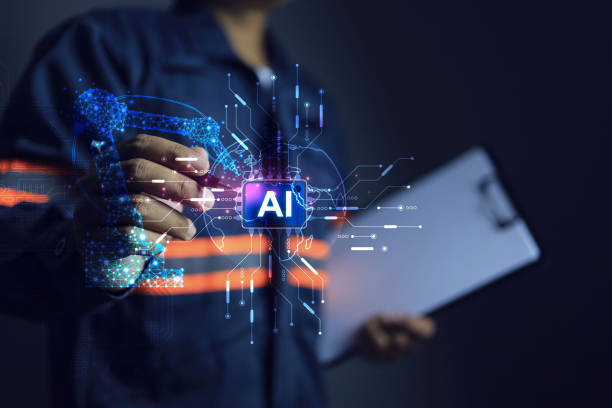
The world of #AI_robots is highly diverse and extensive, and this diversity is tied to their myriad and specialized applications across various industries.
The classification of these #intelligent_machines is based on their type of operation, operational environment, and level of autonomy.
One of the most common classifications is the distinction between #industrial_robots and #service_robots.
Industrial robots, such as robotic arms in production lines, are designed to perform repetitive, precise, and hazardous tasks in factories.
These robots have significantly increased the speed, accuracy, and quality of production in industries like automotive, electronics, and metalworking.
They can perform welding, assemble components, or move heavy goods, ultimately improving overall productivity astonishingly.
In contrast, service robots are designed for more direct interaction with humans and in non-industrial environments.
This category itself includes numerous subcategories: medical and surgical robots that provide unprecedented precision in sensitive operations; exploratory robots that gather information in hazardous or inaccessible environments such as space, ocean depths, or disaster-affected areas; household and consumer robots like robotic vacuum cleaners or personal assistant robots that simplify daily life; and customer service robots that assist and guide people in banks, hotels, or airports.
Additionally, Humanoid Robots are also under development, resembling humans in appearance and designed for more complex social interactions, and even educational or entertaining tasks.
Each of these intelligent robotic systems, leveraging artificial intelligence, offers unique capabilities to solve specific problems and push the boundaries of this technology’s application.
Next, we will take a closer look at some of these types and their applications:
| Type of Robot | Examples | Main Applications |
|---|---|---|
| Industrial Robot | Robotic arms, AGVs (Automated Guided Vehicles) | Manufacturing, assembly, welding, material handling, quality control |
| Service Robot (Household) | Robotic vacuum cleaners, kitchen robots | Cleaning, assistance in daily tasks, home security |
| Medical and Surgical Robot | Da Vinci surgical systems, rehabilitation robots | Precise surgery, nursing, rehabilitation, drug distribution |
| Humanoid Robot | Sophia, Atlas | Social interaction, education, research, entertainment |
| Exploration Robot | Mars rovers, underwater robots | Space exploration, mapping, environmental monitoring, search and rescue |
Architecture and Operation of AI Robots
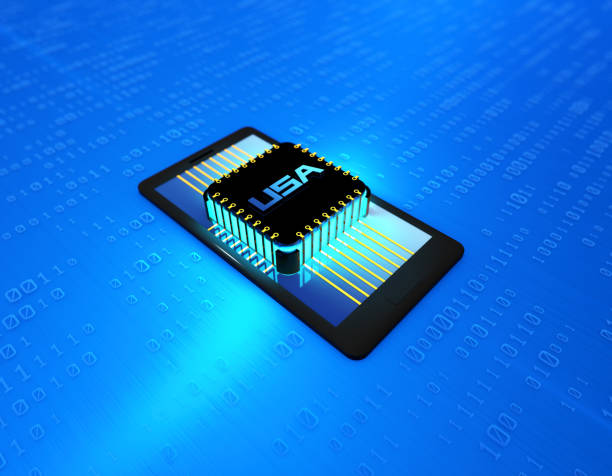
Understanding how an #AI_robot works requires knowing the complex architecture that enables it to perceive, decide, and act.
The core of every intelligent robotic system consists of three key components: #sensors, #processors, and #actuators (movers).
Sensors, like the robot’s eyes and ears, collect environmental information.
This information can include visual data from cameras, audio data from microphones, tactile information from pressure sensors, or navigation data from GPS and lidar.
The accuracy and variety of sensors determine the robot’s ability to fully and correctly understand its surroundings.
This data is then transferred to the processors.
Processors, considered the robot’s brain, are responsible for analyzing and interpreting the raw data received from the sensors.
This is where advanced algorithms of artificial intelligence, especially #machine_learning and deep learning, come into play.
The AI system uses trained models to recognize patterns, make necessary decisions, and generate an operational plan.
For example, an autonomous robot identifies pedestrians, other vehicles, and traffic signs using camera and lidar data and calculates a safe path of travel.
This stage is the most complex part of AI robot operation, requiring high computational power and optimized algorithms for real-time processing.
Finally, actuators or movers convert the commands issued by the processor into physical movement or task execution.
These actuators can include motors, mechanical arms, wheels, or pumps, enabling the robot to interact with its physical environment.
The seamless cooperation of these three components allows an intelligent machine to perform complex tasks automatically and with high efficiency, operating independently in various environments.
This modular and flexible architecture enables continuous development and improvement of robot capabilities, allowing them to perform optimally in new and challenging scenarios.
Did you know that 94% of users’ first impressions of a business are related to its website design? With professional corporate website design by **Rasaweb**, turn this first impression into an opportunity for growth.
✅ Attract more customers and increase sales
✅ Build credibility and trust in the audience’s eyes⚡ Get a free website design consultation!
Advantages and Challenges of Implementing AI Robots
![]()
Implementing #AI_robots in industries and daily life comes with countless advantages that can bring about a tremendous transformation.
One of the most prominent advantages is the significant increase in productivity and efficiency.
Robots can perform repetitive and arduous tasks with very high speed and accuracy, minimize human error, and work 24/7 without fatigue.
This is crucial, especially in production and assembly lines, where extreme precision and high speed are required.
Additionally, the use of intelligent robotic systems in hazardous environments, such as mines, chemically contaminated areas, or during search and rescue operations, saves human lives.
Robots are capable of working in conditions that are highly dangerous or even impossible for humans.
This safety capability alone is a significant justification for investing in this technology.
However, like any emerging technology, #AI_robots also come with significant challenges and concerns that must be addressed.
One of the most important concerns is the impact on the job market and the loss of traditional jobs.
With the automation of many tasks, jobs requiring repetitive or physical labor may disappear, which necessitates planning for retraining and creating new job opportunities.
Privacy and #data_security are also important challenges, as robots often have access to vast amounts of sensitive information, the misuse of which can have serious consequences.
Furthermore, ethical discussions surrounding autonomous robot decision-making, accountability in case of errors, and the potential for misuse of this technology are among the topics that need careful consideration.
Robotics laws and regulatory frameworks must be developed to ensure that the development and deployment of this intelligent technology are carried out responsibly and beneficially for society.
These challenges, along with the high initial implementation costs and the need for technical expertise, require a comprehensive and planned approach to maximize the benefits of this technology and mitigate its risks.
| Ethical/Social Consideration | Explanation | Proposed Solutions |
|---|---|---|
| Job displacement | Automation of repetitive and physical tasks leads to job losses. | Extensive retraining programs, teaching new skills, unemployment support policies, creation of new jobs (AI Ethics, AI Maintenance) |
| Privacy and Data Security | Collection and processing of personal data by robots pose a privacy risk. | Strict data protection laws (e.g., GDPR), strong encryption, Privacy by Design |
| Responsibility and Ethics | Unclear responsibility in case of error or harm by autonomous robots. | Development of new laws and regulations, establishment of AI ethics committees, clear definition of roles and responsibilities |
| Algorithmic Biases | Reflection of biases in training data in robot decisions. | Use of diverse and unbiased training data, auditing algorithms, development of Explainable AI |
| Military Applications and Autonomy | Concern about the development of autonomous lethal weapons with independent decision-making capabilities. | International limitations, Meaningful Human Control over weapon systems. |
Bright Future of AI Robots and Predictions
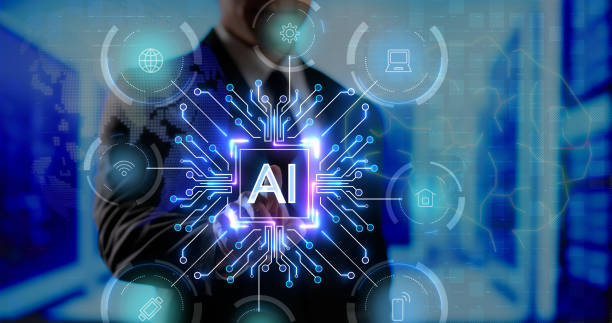
The future of #AI_robots appears far more exciting than their past, with predictions indicating deeper transformations in the decades ahead.
We will witness an increasing complexity and capability of #intelligent_machines that will go beyond repetitive tasks, engaging in more complex cognitive work, creativity, and even deeper interactions with humans.
One of the most important trends is the development of collaborative robots (Cobots), designed to work alongside humans, not in place of them.
These robots are capable of performing tasks that are difficult or dangerous for humans, while simultaneously benefiting from human intelligence and flexibility.
This approach increases productivity without completely eliminating the human role.
In the medical field, #AI_robots are expected to play a more prominent role in diagnosing diseases, assisting with highly precise surgeries, producing new medicines, and even rehabilitation care.
In homes, service robots will become more advanced, not only performing cleaning tasks but also acting as personal assistants, companions for the elderly, or private tutors for children.
In transportation, self-driving cars and delivery robots will become commonplace, leading to reduced traffic, pollution, and road accidents.
Furthermore, advancements in Artificial General Intelligence (AGI) and soft robotics will unlock new potentials for robots with human-like physical and cognitive capabilities, allowing them to perform efficiently in more complex and unknown environments.
These advancements paint a future where #technology not only simplifies our tasks but also enables us to reach new potentials and solve global challenges innovatively.
It is necessary for society to prepare itself for these changes and make the most of the opportunities that these intelligent agents offer.
Ethical and Social Considerations in the Development of AI Robots
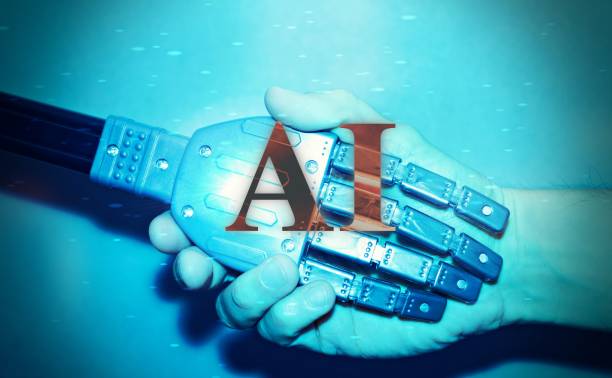
The rapid development of #AI_robots, alongside numerous benefits, also brings a complex set of #ethical and #social considerations that must be addressed to ensure a sustainable and fair future.
One of the most prominent concerns is the job displacement issue.
With the increasing capabilities of robots in performing various tasks, there is a fear that millions of people may lose their jobs.
This requires intelligent policymaking in workforce retraining and creating new job opportunities.
Furthermore, privacy and #data_security are also highly important challenges, as robots often have access to vast amounts of sensitive information, the misuse of which can have serious consequences.
The issue of #accountability for #AI_robot decisions is also a serious legal and ethical challenge.
Who is responsible if an autonomous robot causes an error or harm? The manufacturer, the programmer, or the user? These questions require the definition of new and clear legal frameworks.
Algorithmic biases can also be a major problem; if the training data from which robots learn contains discrimination or bias, the robot will reflect these biases, which can exacerbate social inequalities.
The development of ethical and transparent AI, which makes its decisions explainable and adheres to principles of fairness and accountability, is essential.
Moreover, the potential use of these intelligent agents in military and surveillance applications raises deep concerns about ethical autonomy and human control over autonomous weapons.
Society must actively participate in discussions about these issues to ensure that the development and deployment of robotic technologies proceed in a manner beneficial to all humanity.
Next, we will examine some of these considerations and their proposed solutions in the table below.
| Ethical/Social Consideration | Explanation | Proposed Solutions |
|---|---|---|
| Job displacement | Automation of repetitive and physical tasks leads to job losses. | Extensive retraining programs, teaching new skills, unemployment support policies, creation of new jobs (AI Ethics, AI Maintenance) |
| Privacy and Data Security | Collection and processing of personal data by robots pose a privacy risk. | Strict data protection laws (e.g., GDPR), strong encryption, Privacy by Design |
| Responsibility and Ethics | Unclear responsibility in case of error or harm by autonomous robots. | Development of new laws and regulations, establishment of AI ethics committees, clear definition of roles and responsibilities |
| Algorithmic Biases | Reflection of biases in training data in robot decisions. | Use of diverse and unbiased training data, auditing algorithms, development of Explainable AI |
| Military Applications and Autonomy | Concern about the development of autonomous lethal weapons with independent decision-making capabilities. | International limitations, Meaningful Human Control over weapon systems. |
Practical Guide to Using AI Robots in Daily Life

With significant advancements, #AI_robot is no longer just a science fiction concept but has become an inseparable part of our #daily_life.
For many, using this #home_technology and smart tools can be a bit confusing at first, but with proper understanding, their full potential can be leveraged for #increasing_efficiency and convenience.
Starting with smart voice assistants like Alexa or Google Assistant is a good first step.
These assistants can help you set alarms, answer questions, play music, and control other smart home devices, greatly simplifying your life.
Another popular application is the use of robotic vacuum cleaners.
These devices use sensors and navigation algorithms to automatically clean your home, requiring no continuous intervention from you.
Some models can even save maps and go to specific areas of the house.
For those looking to enhance home security, smart security cameras with motion and facial recognition capabilities, enhanced by AI, are an excellent option.
These cameras can send alerts to your phone if suspicious activity is detected.
In the field of education, AI-powered language learning apps and platforms can also offer a personalized and effective experience.
These platforms analyze your performance, identify strengths and weaknesses, and provide targeted exercises.
For small businesses, AI chatbots can provide 24/7 customer service, answer common questions, and even accelerate sales processes.
Using these intelligent robots does not require deep technical expertise; with a simple look at the manual and a bit of trial and error, you can quickly familiarize yourself with them and benefit from their countless advantages in improving quality of life and increasing efficiency.
These solutions demonstrate how AI technology can make our lives simpler, more efficient, and more entertaining.
Are you tired of your company’s website failing to meet your expectations? With Rasaweb, design a professional website that truly represents your business.
✅ Increase new customer acquisition and sales leads
✅ Boost your brand’s credibility and trust with your audience
⚡ Get a free website design consultation!
Training and Skill Development for Working with AI Robots
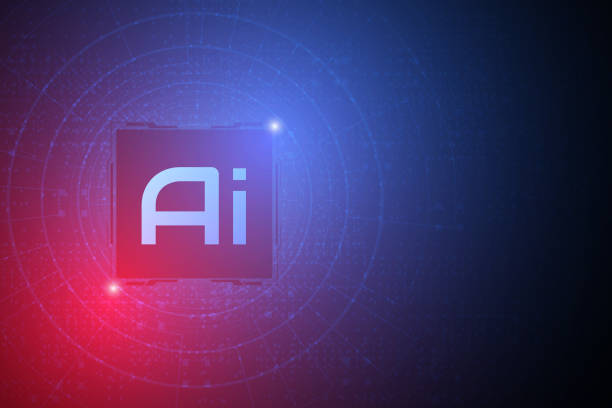
With the increasing application of #AI_robots across all sectors of society, the need for specialized and skilled labor in this field is felt more than ever.
Investing in #education and #skill_development for working with artificial intelligence and robotics #technology is key to individual success and countries’ economic growth.
To enter this field, understanding the fundamental concepts of #computer_science and programming, especially languages like Python, is essential.
Python is considered the primary language for developing AI and robotics algorithms due to its rich libraries and ease of learning.
After mastering the fundamentals, the next step is learning more specialized AI concepts, including #machine_learning, #deep_learning, Natural Language Processing (NLP), and #computer_vision.
Online courses from platforms like Coursera, edX, and Udemy are excellent resources for acquiring this knowledge.
Additionally, participating in practical projects and Kaggle can provide valuable experience.
For those interested in the physical aspects of robotic systems, studying topics related to #mechanics, #electronics, and sensors is also crucial.
Universities and research centers also offer specialized programs in robotics and artificial intelligence, which can outline a clear professional path.
In addition to technical skills, problem-solving ability, analytical thinking, and creativity are also important characteristics for success in this field, as working with #intelligent_agents often involves encountering new and complex challenges that require innovative solutions.
With this knowledge and skills, you can play an effective role in shaping a future where #AI_robot acts as a powerful partner alongside humans and solves many global issues.
This field is not only promising in terms of career prospects but also allows you to participate in technological advancements that are changing the world.
Conclusion and Final Outlook on AI Robots
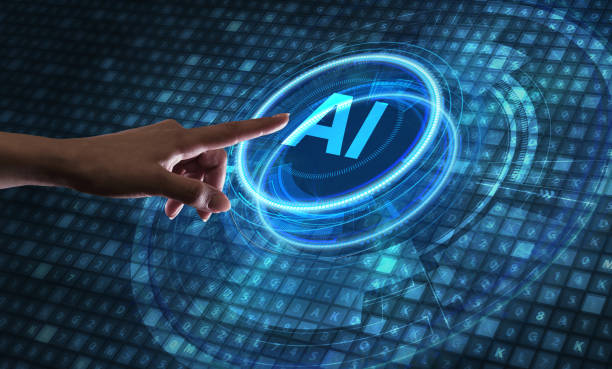
Throughout this article, we embarked on a deep journey into the world of #AI_robots, examining everything from their definition and history to their types, operation, advantages, challenges, and ethical and social considerations.
What is clear is that intelligent robotic #technology is no longer a dream but a growing reality that is #fundamentally_transforming all aspects of our lives.
From manufacturing industries progressing with unprecedented speed and precision, to healthcare enabling millimetre-accurate surgeries, and from personalized education and learning to improving #daily_life_quality, the potential of these intelligent machines is endless.
They are capable of undertaking repetitive and dangerous tasks, optimizing resources, and even helping us discover new frontiers of knowledge.
#AI_robot is not only a tool for increasing efficiency but also a driving force for innovation and progress.
However, these advancements also come with significant #responsibilities.
As we saw, concerns such as job displacement, #privacy issues, and #ethical challenges regarding autonomous robot decision-making require careful attention and planning.
A future where #AI_robot plays a central role is a future that demands continuous collaboration among AI experts, policymakers, philosophers, and the general public.
Laws must be formulated to guide the development of this technology to ensure it progresses for the benefit of all humanity and adheres to principles of fairness and #transparency.
The final outlook on these intelligent agents is a future where robots are not just tools in our hands but partners in humanity’s evolutionary journey; partners who help us reach new horizons and build a better and more sustainable world.
This path is exciting, and with proper planning, we can make the most of its countless opportunities and turn its challenges into stepping stones for growth and flourishing.
Frequently Asked Questions
| Question | Answer |
|---|---|
| What is an AI robot? | It is a robot that uses artificial intelligence capabilities to understand its environment, reason, learn, and make decisions to perform complex tasks autonomously. |
| What is the main difference between a regular robot and an AI robot? | AI robots can learn and adapt to their environment, while regular robots typically operate based on fixed, predetermined programming. |
| In which fields are AI robots used? | In fields such as industry (production lines), medicine (robotic surgeries), services (customer support, smart vacuum cleaners), exploration (space and underwater) and entertainment. |
| How do AI robots learn? | They acquire new skills through Machine Learning and Deep Learning algorithms, by analyzing large data sets and identifying patterns. |
| Can AI robots have emotions? | Currently, no. They can identify or simulate emotions, but they do not experience genuine emotions like humans. |
| What are the most important advantages of using AI robots? | Increased productivity, reduced human error, performing dangerous or repetitive tasks, and providing innovative and efficient services. |
| What challenges exist in the development of AI robots? | The need for abundant and high-quality data, algorithmic complexity, ethical issues, cybersecurity, and high research and development costs. |
| Are AI robots dangerous to humans? | With adherence to safe design principles and ethical regulations, no. Concerns are more related to social and economic impacts such as changes in the job market. |
| An example of an AI robot in daily life? | Smart robotic vacuum cleaners (like Roomba) that autonomously map and clean the home, or smart voice assistants (like Siri and Alexa). |
| How is the future of AI robots predicted? | They are expected to become smarter, more autonomous, and capable of more complex interactions with humans, playing a more prominent role in industry, medicine, transportation, and daily life. |
And other advertising services of Rasaweb advertising agency
Smart Custom Software: A fast and efficient solution for user interaction focusing on marketing automation.
Smart Brand Identity: A creative platform for improving customer acquisition with intelligent data analysis.
Smart SEO: A creative platform for improving online growth with intelligent data analysis.
Smart Social Media: Professional optimization for increasing sales using Google Ads management.
Smart Advertising Campaign: An effective tool for campaign management with user experience customization.
And hundreds of other services in the field of internet advertising, advertising consultation, and organizational solutions
Internet Advertising | Advertising Strategy | Advertorial
Resources
The Future of AI in IranLatest Advancements in RoboticsThe Role of AI in Daily LifeChallenges and Opportunities of AI
? With Rasaweb Afarin, your business shines in the digital world! With our expertise in key digital marketing areas including multilingual website design, Search Engine Optimization (SEO), and professional social media management, we are ready to take your brand to new heights.
📍 Tehran, Mirdamad Street, next to Bank Markazi, Kazeroun Jonoubi Alley, Ramin Alley, No. 6

